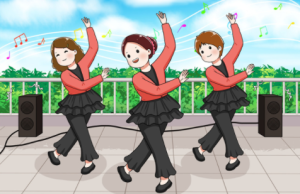Square Dancing: A Treasure of Our Society, Not to Be Forbidden
- 广场舞百科
- 2024-03-27 18:30:27
- 75
Content:

Square dancing, as a traditional cultural practice, has been an integral part of Chinese society for many years. It not only represents a unique form of exercise but also serves as a bond that brings people together. Lately, there has been a debate on whether square dancing should be forbidden, mainly due to the noise and disturbances it causes to the nearby residents. However, I strongly believe that square dancing should not be forbidden, but rather, managed and regulated in a way that benefits both the dancers and the community.
Firstly, let's take a look at the current situation of square dancing. In recent years, square dancing has gained immense popularity, especially among the elderly. Every evening, you can see groups of dancers in parks, squares, and even residential communities, moving to the rhythm of the music. It has become a daily routine for many people, providing them with an enjoyable way to exercise and socialize.
However, the loud music and large gatherings have also led to conflicts with nearby residents. The noise can be disturbing, affecting the peace and quiet of the surroundings. This has caused some people to call for a ban on square dancing, arguing that it disrupts their lives and causes inconvenience.
Nevertheless, I firmly oppose the idea of forbidding square dancing. Here are my reasons:
1、Health benefits: Square dancing is an excellent form of exercise that promotes physical and mental well-being. It helps improve cardiovascular fitness, strength, flexibility, and coordination. For many elderly people, square dancing is the only form of exercise they engage in regularly. Banning it would take away an essential activity that contributes to their health and longevity.
2、Social interaction: Square dancing provides a platform for people to interact, make friends, and build a sense of community. It brings people of different ages, backgrounds, and social statuses together, fostering social cohesion and a sense of belonging. By forbidding square dancing, we would be robbing the community of this valuable opportunity for social engagement.
3、Cultural preservation: Square dancing carries cultural significance, reflecting our traditional values and heritage. It is a way to pass down our cultural traditions from one generation to another. Banning it would mean losing a part of our cultural identity.
4、Manageable solutions: Instead of completely banning square dancing, we can implement measures to minimize the disturbances caused by it. For instance, setting specific time frames and volume limits for playing music, designating certain areas for dancing, and promoting mutual understanding and respect between dancers and residents can help address the concerns of both parties.
Moreover, square dancing brings economic benefits to the community. It attracts people to public spaces, which in turn, boosts business for nearby shops and vendors. It also promotes tourism, as square dancing has become a cultural icon that attracts visitors from both home and abroad.
In conclusion, square dancing should not be forbidden. It is a valuable treasure of our society, offering numerous benefits to individuals and the community as a whole. Instead of resorting to a ban, we should focus on managing and regulating square dancing in a way that balances the interests of all stakeholders. By doing so, we can ensure that square dancing continues to thrive, enriching our lives and preserving our cultural heritage.
免责声明:本网站上的所有文章内容均来自互联网。本网站仅在法律允许的范围内使用、分享和传播这些内容,不违反任何版权或知识产权法。如发现本站有涉嫌抄袭侵权/违法违规的内容,请发送邮件25538@qq.com举报,一经查实,本站将立刻删除。
本文链接:https://zhuangrou.com/gcw/434.html



















